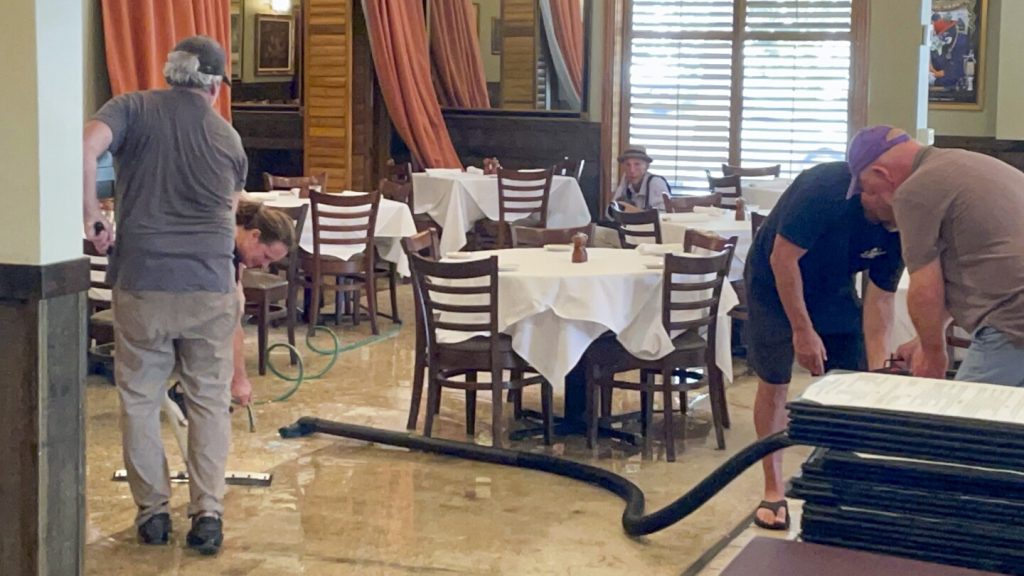Hurricane Francine hit Louisiana, causing power outages, flooding, and heavy rainfall in New Orleans, a city with a complex drainage system. The city struggles with floods due to its low elevation and reliant on pump and canal systems to keep water out. The aftermath of Hurricane Katrina prompted a $14 billion investment in levees and pumps to protect the city from storm surges. However, the system also causes rainwater to be trapped within the city walls, leading to flooding during heavy downpours.
The geographic location of New Orleans, below sea level and surrounded by marshy lowlands, makes it challenging for gravitational drainage systems to work effectively. A network of pumps and canals is crucial in draining rainwater, with some of the infrastructure being over a century old. The system struggled during Hurricane Francine, with some pumps experiencing electrical issues that slowed drainage. Efforts have been made to upgrade the drainage system, including improved power generation and new pumping stations, after previous severe flooding events.
Louisiana Governor Jeff Landry acknowledged the need for further improvements in the drainage system post-Hurricane Francine. State and federal emergency officials are collaborating with the city to enhance pump and power generation capabilities. The impact of climate change, with increased moisture in the atmosphere leading to more intense storms, poses a significant challenge for existing stormwater infrastructure. The city must prepare for worst-case scenarios where storms stall over the city, causing prolonged heavy rainfall and major flooding events.
Experts warn that Louisiana’s stormwater infrastructure will face increasing challenges in the future due to climate change. The unpredictability of storms and the potential for prolonged heavy rainfall require continuous upgrades and improvements to the drainage system. New Orleans, with its unique geography and history of flooding, must adapt to the changing climate and invest in resilient infrastructure to withstand future extreme weather events. The city’s ability to manage stormwater effectively is crucial for its long-term sustainability and the protection of its residents from flood-related disasters.


